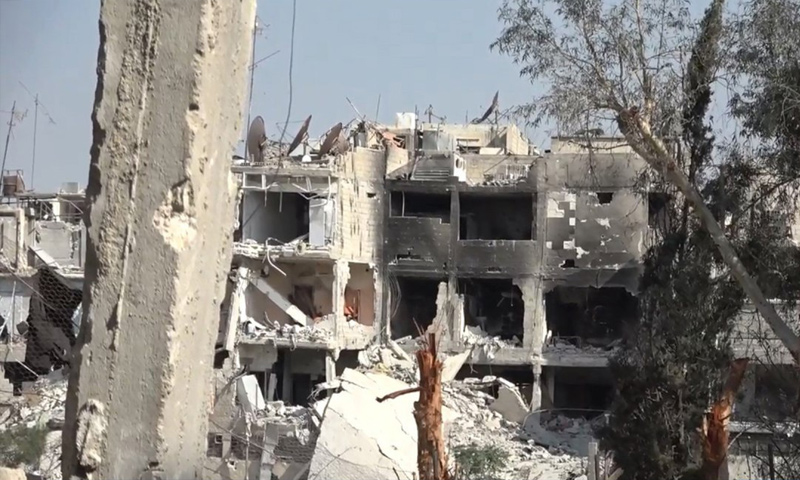The last chapter of the battles in the Yarmouk Camp area is being written, following almost a month of intense military operations conducted by Assad’s forces against the “Islamic State” (ISIS).
This came after the two sides were able to reach a ceasefire agreement in the area, put into force on Saturday 19 May, at 12 noon, until 5 am, on Sunday 20 May.
Russian news agencies and pro-regime networks reported the news, saying that the agreement provides for the “Islamic State’s” elements exit from the area after they have surrendered, before a military source could deny the agreement to Syrian Arab News Agency (SANA) saying that “there is not any agreement between the Syrian army and ISIS’ terrorists in the al-Hajar al-Aswad area and that the information being circulated are not accurate.”
According to Enab Baladi’s sources, leaders of the “al-Ghaith Forces,” under the “4th Armoured Division” that is functioning in the area, have, on Friday, asked their elements to get prepared as to move towards Daraa. When the elements asked about the destiny of the camp’s battles, the leaders answered that “the battle has ended.”
An Unknown Destination for ISIS Fighters
After the news, questions erupted as to which destination the “Islamic State’s” fighters would be sent, in case the ultimate agreement was to be conducted; the Yarmouk Basin, in the western countryside of Daraa that “Khalid ibn al-Walid Army,” accused of showing loyalty to ISIS, appears as a possibility.
In a proactive step, on the 29th of last April, “Khalid Army” launched an attack through which it aimed at controlling Shaykh Saad and the adjacent area of Masaken Jalin, which it controlled for a few hours, before the opposition factions managed to recover it.
In a former interview with Enab Baladi, Hashem Abu Huzaifa, a leader in “Hay’at Tahrir al-Sham” (HTS), said that with the attack, “Khalid Army” seeks, through seizing Shaykh Saad, to link its control areas with the city of al-Shaykh Maskin, under Assad’s forces, due to which the forces will be able to transport ISIS fighters from southern Damascus to the Yarmouk Basin.
According to the leader, the opposition factions have the right to abort ISIS’ fighters passage agreement if it were to take place, by targeting the buses gathering points or track, or through attacking Assad’s forces and their checkpoints in al-Shaykh Maskin to fail the operation.
Draining Assad’s Forces
Assad’s forces delay in controlling the Yarmouk Camp has triggered the regime’s loyalists’ dissatisfaction, especially that the number of ISIS elements is no more than 300 fighters; however, pro-regime websites, later on, have attributed this to different justifications, including, “the complex geography and the difficult urban structure that prevent the basic and heavy armored vehicles from going deeper via ground incursions,” in addition to the massive number of tunnels that are hindering Assad’s forces progress on the ground.
On Friday 18 May, “Amaaq” agency, ISIS affiliate, presented Assad’s forces’ casualties since the beginning of the campaign, reporting that ISIS’ fighters have responded to all Assad’s forces incursion since the beginning of the campaign, during which 900 members were killed and 37 vehicles were damaged, in correspondence to the persistent air raids (about a hundred daily raids on residential neighborhoods) targeting the Yarmouk camp, 80% of which has been destroyed.
The agency has posted images of the camp, showing the massive destruction that befell it due to air raids and daily rocket shelling, which comply with what Enab Baladi has published on the 10th of last April, that the regime is trying to destroy the area, to utilize the destruction as an allegation to prevent the people from returning, and then integrating it with “Basilia City” Urban Plan, adopted by Damascus Governorate, on 26th of last March, which expands from the southern side of the southern highway, to al-Qadam, then to al-Asali and al-Thalathin street.

